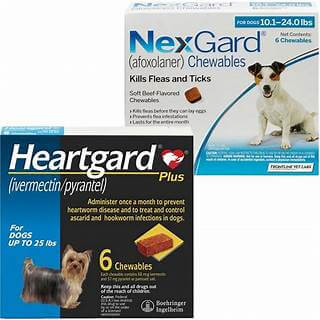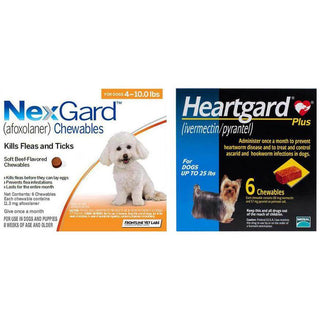NexGard is a popular oral flea and ticks preventative medication for dogs. It's convenient and effective, but it's important to know how often to give it to your dog to ensure their safety and well-being. In this blog, we'll answer how often you can give NexGard to your dog and discuss some important considerations for administering this medication.

Understanding The Active Ingredient In NexGard
NexGard contains the active ingredient Afoxolaner, an insecticide that disrupts the nervous system of fleas and ticks. This medication is given orally and absorbed into your dog's bloodstream, which can protect it for a full month.
Determining How Often To Give NexGard
The frequency with which you should give NexGard to your dog depends on a number of factors, including your dog's weight, overall health, and exposure to fleas and ticks.
For dogs who are at a high risk of exposure to fleas and ticks, it is recommended to give NexGard once a month, year-round. For dogs with a lower exposure risk, it may be sufficient to give NexGard seasonally.
In general, it is safe to give NexGard once a month as long as your dog is healthy and doesn't have any known allergies to the medication. However, suppose your dog has a pre-existing health condition or is taking other medications. In that case, it is important to talk to your vet before starting NexGard, as it could interact with other medicines and affect your dog's health.
Important Considerations For Administering NexGard
There are several important considerations to keep in mind when administering NexGard to your dog. Some of these include:
- Make sure to give your dog the correct dose based on their weight. Overdosing can lead to serious health problems.
- If you miss a dose, give it as soon as you remember, but if it's close to the next scheduled dose, wait until the next one.
- Store NexGard in a cool, dry place and keep it out of reach of children and pets.
- If your dog vomits after taking NexGard, contact your vet as soon as possible.
- Monitor your dog for any adverse reactions to the medication, and contact your vet if you notice anything concerning.
- If your dog is pregnant or nursing, talk to your vet before giving them NexGard, as the medication may not be safe for use in these situations.
Nexgard Sizes
NexGard is available in several different sizes to accommodate dogs of different weights. The sizes available are:
- NexGard Chew For Very Small Dogs 4-10lbs (2-4kg)
- NexGard Chew For Small Dogs 10-24lbs (4-10kg)
- NexGard Chew For Medium Dogs 24-60lbs (10-25kg)
- Nexgard Chew For Large Dogs 60-121 lbs (25-50kg)
Choosing the correct size for your dog based on weight is important, as giving the incorrect dose can lead to serious health problems. Be sure to talk to your vet if you have any questions about the correct size for your dog. They can recommend the appropriate dose and frequency of NexGard based on your dog's needs and circumstances.
Conclusion
In conclusion, NexGard is a convenient and effective way to protect your dog from fleas and ticks. To determine how often to give it to your dog, consider factors such as weight, overall health, and exposure to fleas and ticks. Generally, it is safe to give NexGard once a month, but be sure to talk to your vet if your dog has any pre-existing health conditions or is taking other medications. Follow the dosing instructions carefully and monitor your dog for any adverse reactions to the medication.
For tips on keeping your dog healthy and protected from fleas and ticks, check out our comprehensive flea and tick prevention guide.






